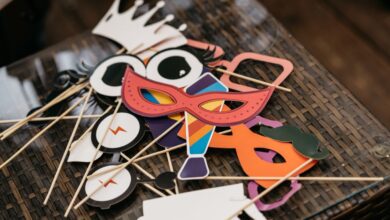5 Things To Check Post-Accident Situations



Cross-country travel is full of adventure and fun. The hours you spend driving to your destination give you a break from city life. But you can never predict what will come your way. Unexpected and unpleasant happenings like rain, thunder, car crashes may happen. Some accidents can be fatal. Over 6 million car accidents occurring in the United States are frightening and horrifying. You may be a professional behind the wheel, but not all drivers take to safety norms.
How prepared are you to handle the car accident and come out safely? You need to do an immediate stocktaking of post-accident physical and mental trauma and the extent of the injury before you call the police and ambulance. You also need to inform the insurance company for claims. What should you do to survive the injury and get back to recovery? Here are some guidelines and courses of action you need to follow right away.
1. Assess your damage.
In the event of an accident, evaluate the human and material damage. If a road rage precipitated the car accident under the influence of drugs, you may have to get on site drug testing near me. If your motor vehicle got bumped from behind, pull your car aside to a safe place to prevent further devastation.
A road accident will immediately put you in a state of shock and panic. Ask for a bottle of water from first-aid staff to help you regain composure. Check your bruises and injuries on your body from head to toe. In case of minor to severe bleeding, get yourself admitted to a nearby hospital. Call nears and dears over the phone to inform them about your accident, financial help, and emotional support.
2. Report the mishap.
Whether it is a fender-bender or a major car collision, dial 911 for police and emergency help, share all details of the accident with the law machinery to get the required support. Fill car accident form and related documents, list the other car driver’s information in case of car bumping, take pictures of your damaged vehicle to support the police investigation.
If the damaged vehicle is still operational, get it off the main road to avoid being hit by approaching vehicles. Set up your damaged car’s reflective emergency triangles to caution oncoming cars. The car damage may attract many onlookers. Keep your patience, and ask for help when required.
3. Contact your accident insurer company.
While police reporting is underway, inform your insurance company. Find out the insurance benefits you can get from your medical policy for accidents and injuries. Submit your hospitalization bills, diagnostic tests, and post-accident treatment costs to your insurance company to get cover benefits.
If your medical benefits have gotten exhausted from the time you took the medical policy, renew your medical cover with the same insurance policy provider or consider changing your insurer. Check with your health insurance company if the medical claims you seek cover other occupants of the vehicle. Road rage is exempt from insurance cover. Rethink before pressurizing your car insurance company for damage cost repayment.
4. File your car accident claim.
Your car insurance service provider is the best person to take you through the claim filing process post-accident. Check with your insurance company on app service for faster filing of claims. Alternatively, browse your insurance company website to fill up the claim details and follow up.
Contact your insurance representative to find about any new insurance laws applicable in your state and country. Whether it is your home territory or cross-country at the accident scene, you may not know the insurance rules, clause, and sub-clause. Be firm on your facts to get your claim.
5. Exchange information in case of no-injury.
If you and your co-passengers are uninjured, then share your contact number and insurance details with the other driver. Both parties should exchange details of the accident location, personal details such as name, contact information, the insurance company, policy number, driver’s license, and license plate number, car details specifying the type, color, and model.
Avoid pin-pointing faults and getting into a heated argument with the other driver. When you file an accident claim, the adjuster will decide who’s at fault after inspecting the damaged vehicle, the authenticity of the information provided by both parties involved in the accident, supporting papers like the photographs from the accident site and the police report. Provide truthful and credible information to prevent unnecessary resettlement charges and loss of time.
Final Thoughts
An accident can make any driver lose confidence and rational thinking. Before starting the car, make sure you have the car insurance and interstate travel papers, your driving license, and legal documents. Carry similar documents of your co-traveler to be on the safe side.
Accidents are unpredictable. Take a first-aid kit for your journey to safeguard yourself from unexpected cuts and bruises that may happen. This is important if you have a child or elderly people with you behind the wheel. Keep comparing car insurance rates and shop around for cheap car insurance policies. Follow prevention and prudence to arrive safely at your chosen destination.



